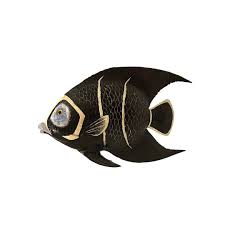Dragons and Their Role in Rainmaking Rituals in Chinese Culture
In Chinese culture, dragons are deeply revered as powerful and benevolent creatures that bridge the human and celestial realms. Among their many symbolic roles, their association with rainmaking holds particular importance, especially in ancient agrarian societies where rainfall was critical for survival. Rainmaking rituals featuring dragons were not just acts of spirituality but essential practices for ensuring prosperity and harmony with nature.
This article explores the pivotal role of dragons in Chinese rainmaking rituals, delving into their symbolism, the religious and cultural practices associated with them, and the enduring legacy of these rituals in modern times.
The Symbolic Association of Dragons with Rain
Chinese dragons, known as “long” (龙), are celestial creatures symbolizing natural elements such as water, wind, and clouds. Unlike the malevolent dragons of Western mythology, Chinese dragons are seen as benefactors, responsible for bringing life-sustaining rain.
Dragons’ connection to rain stems from their depiction as masters of water. They govern rivers, seas, and the skies, and their movements are believed to influence weather patterns. In Chinese cosmology, dragons soar through the clouds to summon rain, representing the harmonious balance between the heavens and the earth.
The Dragon Kings: Guardians of the Waters
Central to Chinese rainmaking rituals are the Dragon Kings—mythical rulers of the seas and guardians of water. There are four main Dragon Kings, each governing one of the cardinal directions and its associated body of water:
- Ao Guang (East Sea)
- Ao Qin (South Sea)
- Ao Run (West Sea)
- Ao Shun (North Sea)
The Dragon Kings are not just custodians of water but also divine intermediaries who control rain and weather. In times of drought or flooding, people would pray to the Dragon Kings, believing they could influence the natural world to restore balance.
Rainmaking Rituals and the Role of Dragons
Rainmaking rituals in Chinese culture were elaborate ceremonies designed to invoke the dragons’ favor and encourage rainfall. These rituals often took place during periods of drought, a time when communities relied heavily on divine intervention to ensure agricultural productivity.
- Offerings to the Dragon Kings
In many rituals, offerings were made to the Dragon Kings to appease them and request rain. Temples dedicated to the Dragon Kings served as the focal points for these ceremonies, where incense, food, and symbolic items were presented. - Dragon Dances
The Dragon Dance, a vibrant and energetic performance, is one of the most well-known practices associated with rainmaking. The dance mimics the movements of a dragon weaving through the sky, symbolizing the creature summoning clouds and rain.The dragon costume, often made of colorful silk and adorned with intricate designs, represents the majesty of the mythical creature. Dancers work in unison to bring the dragon to life, their movements accompanied by rhythmic drumming to evoke the sound of thunder.
- Daoist Rituals
In Daoism, priests performed rituals to summon rain by invoking dragons as spiritual intermediaries. These ceremonies often included chanting, the use of talismans, and the burning of incense. The rituals aimed to align human desires with the natural order, ensuring the dragons would respond favorably. - Sacrificial Ceremonies
In ancient times, sacrificial ceremonies were sometimes conducted to plea for rain. Offerings of animals, food, and symbolic artifacts were made to the dragons and other deities. These ceremonies were deeply spiritual events, reflecting humanity’s dependence on nature and divine forces.
Dragons in Art and Literature Depicting Rainmaking
The association between dragons and rain is vividly portrayed in Chinese art and literature. Scroll paintings often depict dragons coiled amidst clouds, with rain falling from their movements. These images symbolize the dragons’ ability to summon rain and sustain life.
Literature and poetry also celebrate the dragons’ rainmaking abilities. In classical Chinese poetry, the arrival of rain is often attributed to dragons riding through the sky. These depictions highlight the cultural reverence for dragons and their role in maintaining ecological balance.
Historical Accounts of Rainmaking Rituals
Historical records document numerous instances where rainmaking rituals were performed during periods of drought.
- The Han Dynasty
During the Han Dynasty (206 BCE–220 CE), emperors conducted rainmaking rituals as part of their divine mandate to ensure prosperity. The emperor, regarded as the “Son of Heaven,” was believed to have a special connection to the dragons.Rituals often involved summoning the Dragon Kings to request rain. These events were elaborate affairs, involving royal processions, music, and prayers.
- Local Rituals in Rural Communities
In rural areas, local rituals were performed by village elders or shamans. These ceremonies were simpler but no less significant, reflecting the community’s dependence on rain for their crops. - Records from the Ming and Qing Dynasties
During the Ming (1368–1644) and Qing (1644–1912) Dynasties, rainmaking rituals became more formalized. Temples dedicated to the Dragon Kings were established across China, serving as centers for worship and prayer during droughts.
Scientific Observations and Rainmaking Rituals
While rainmaking rituals were deeply spiritual, they also reflected an understanding of natural phenomena. The connection between clouds, wind, and rain, symbolized by the dragons, highlights the early recognition of meteorological patterns.
For instance, the timing of rainmaking rituals often coincided with seasonal changes, suggesting an intuitive grasp of weather cycles. The rituals may have served not only as spiritual practices but also as communal events that unified people in the face of environmental challenges.
The Enduring Legacy of Dragon Rainmaking Rituals
Although modern technology has reduced the reliance on traditional rainmaking rituals, the cultural significance of dragons and their role in rainmaking persists.
- Festivals and Celebrations
Events such as the Dragon Boat Festival continue to honor the dragons’ connection to water and their importance in Chinese culture. While primarily a sporting event today, the festival has its roots in ancient traditions that revered dragons as protectors of waterways. - Symbolism in Modern China
The dragon remains a potent symbol of power, prosperity, and harmony. Its association with rain and water underscores its role as a guardian of life. In modern times, dragon motifs are found in art, architecture, and festivals, preserving their cultural relevance. - Environmental Awareness
The legacy of dragon rainmaking rituals also highlights the ancient understanding of humanity’s dependence on natural forces. This awareness resonates with modern environmental movements that emphasize the importance of harmony with nature.
Conclusion
Dragons hold a unique and sacred place in Chinese culture, embodying the balance between humanity and nature. Their role in rainmaking rituals reflects their importance as symbols of life, prosperity, and divine power.
Through rituals, dances, and art, the connection between dragons and rain endures as a testament to the cultural and spiritual values of ancient China. As modern society continues to explore its relationship with nature, the legacy of dragons and their rainmaking role serves as a reminder of the profound respect for natural forces that has shaped Chinese civilization for millennia.



